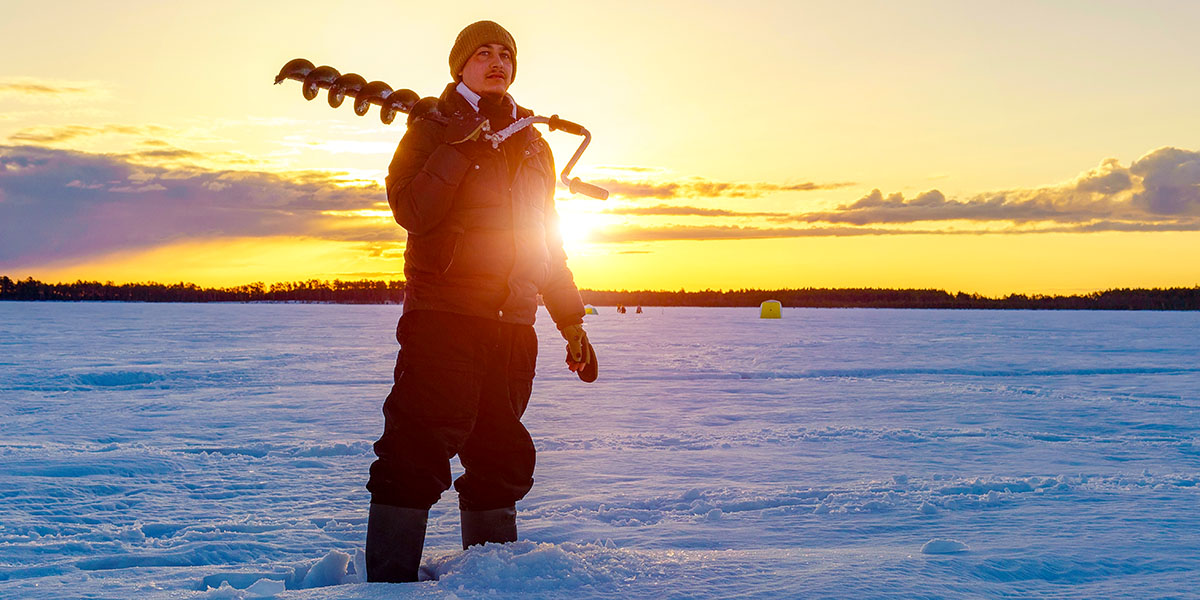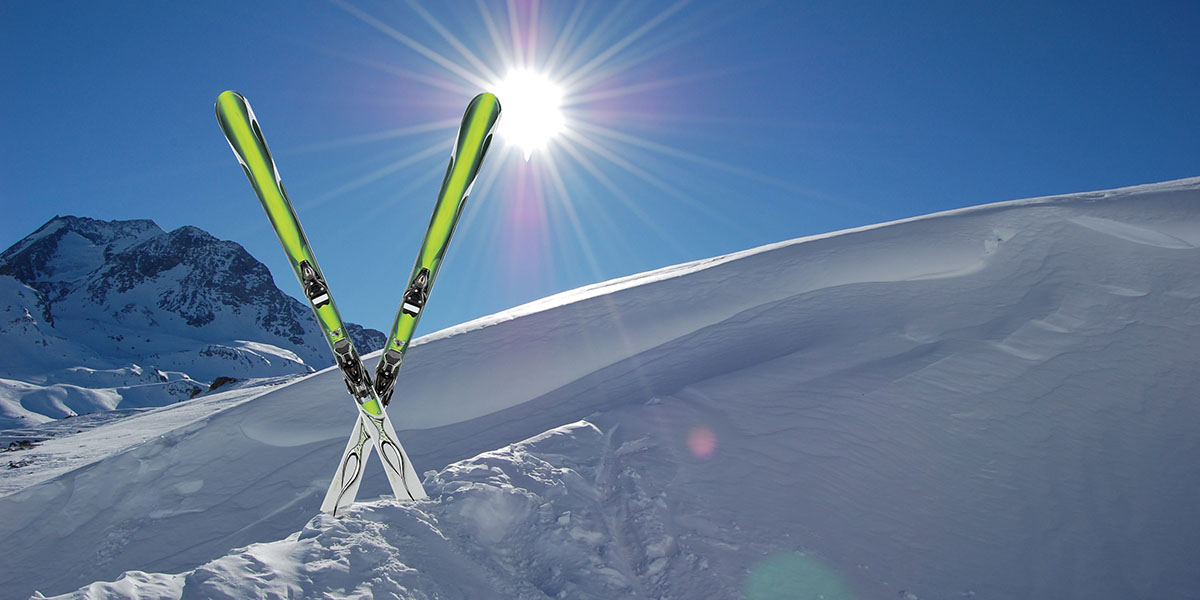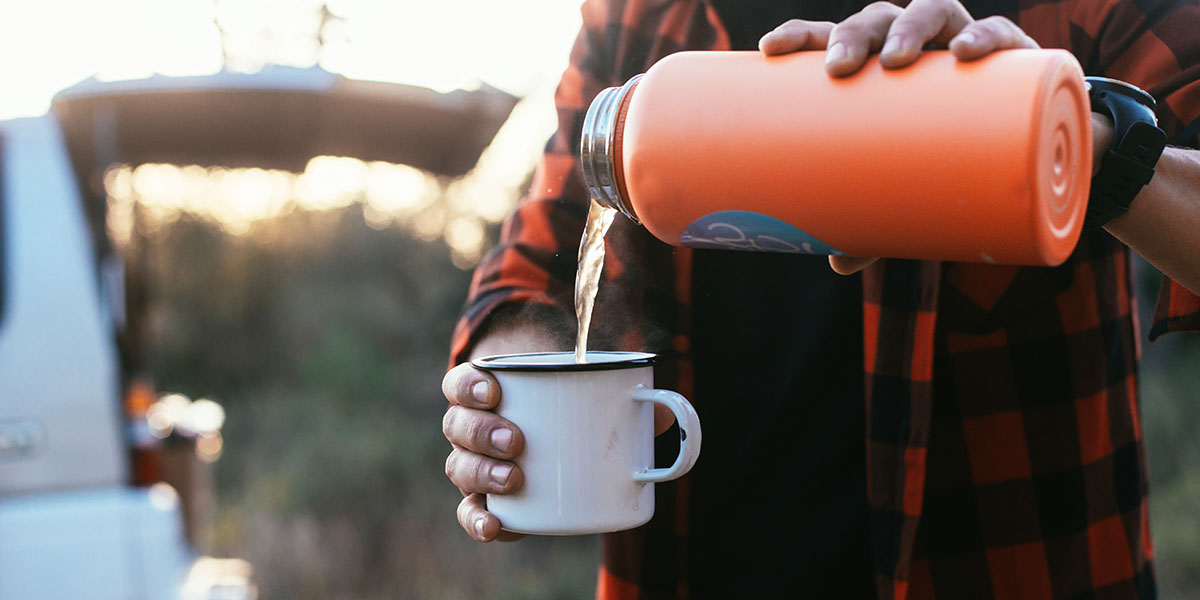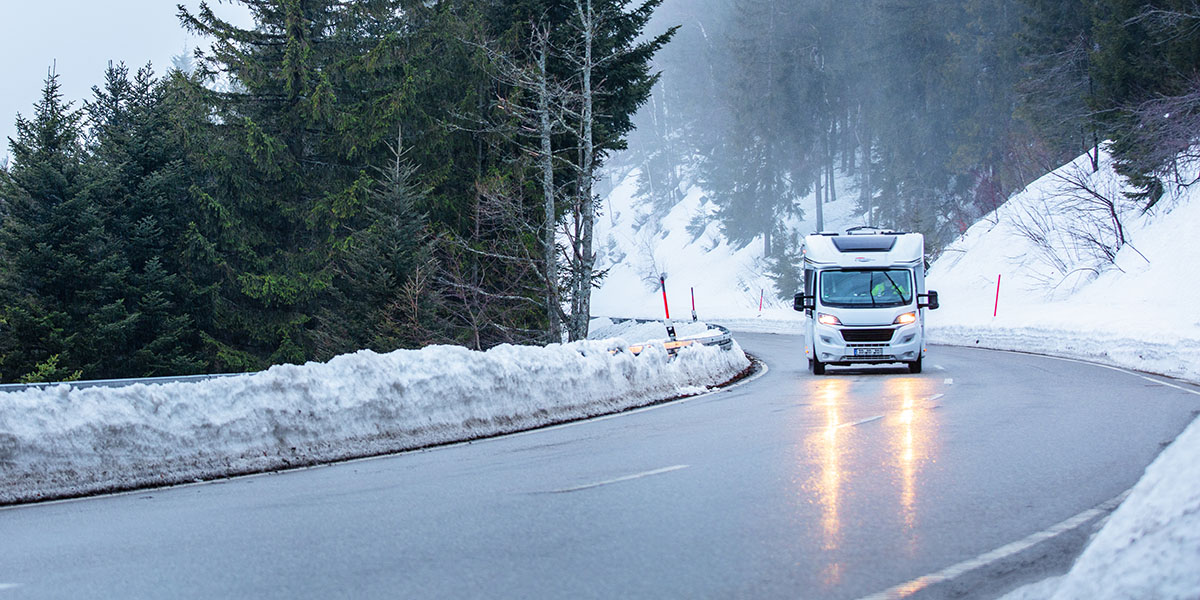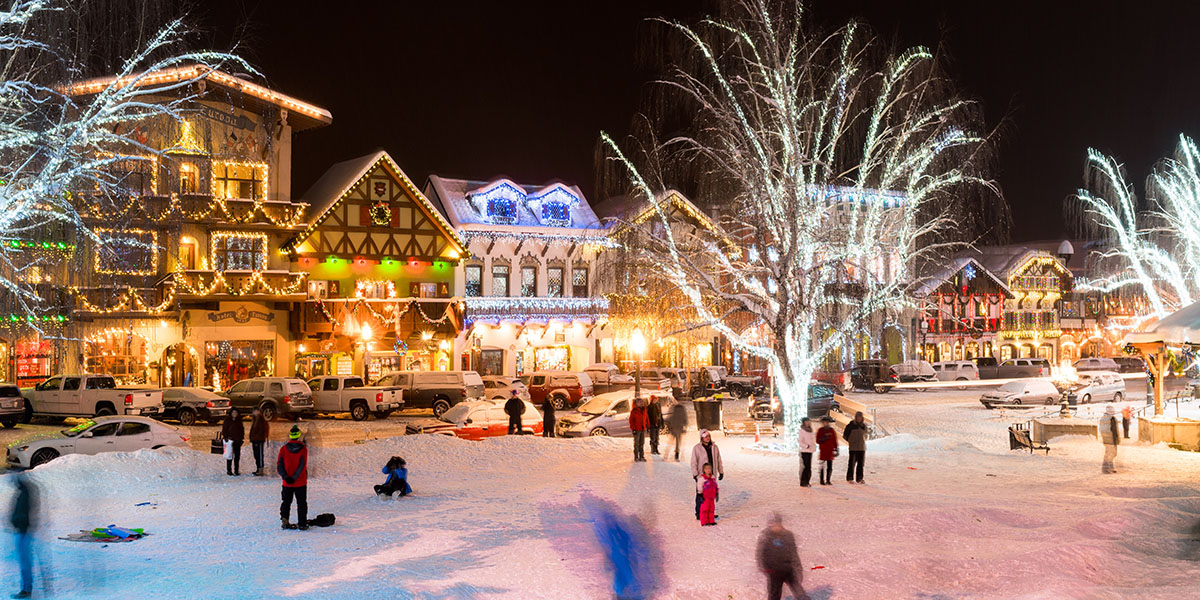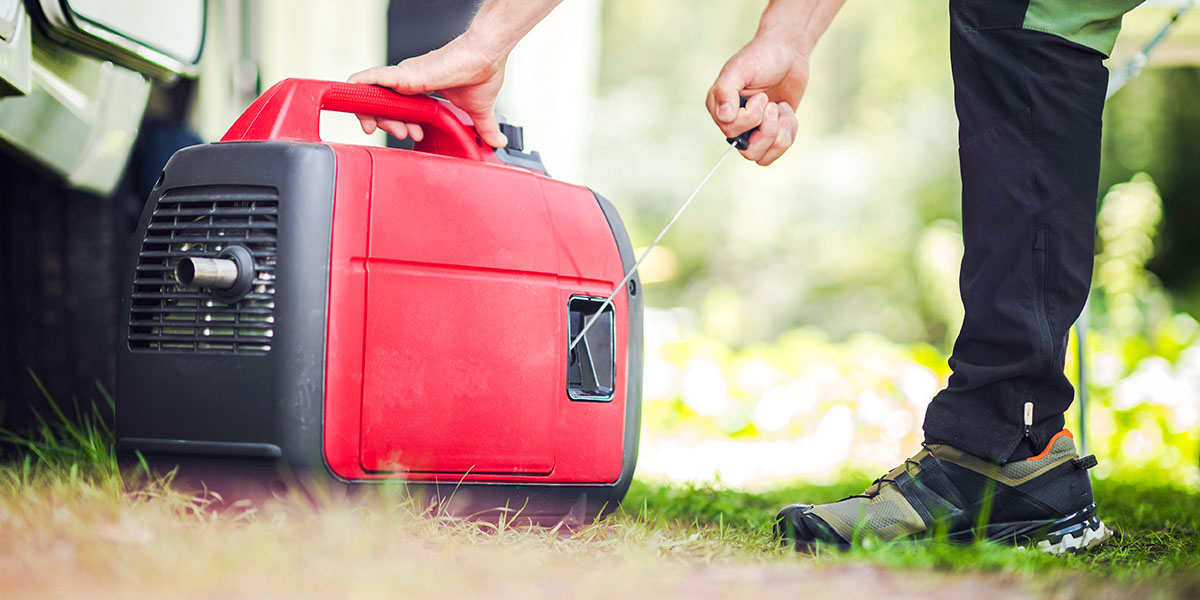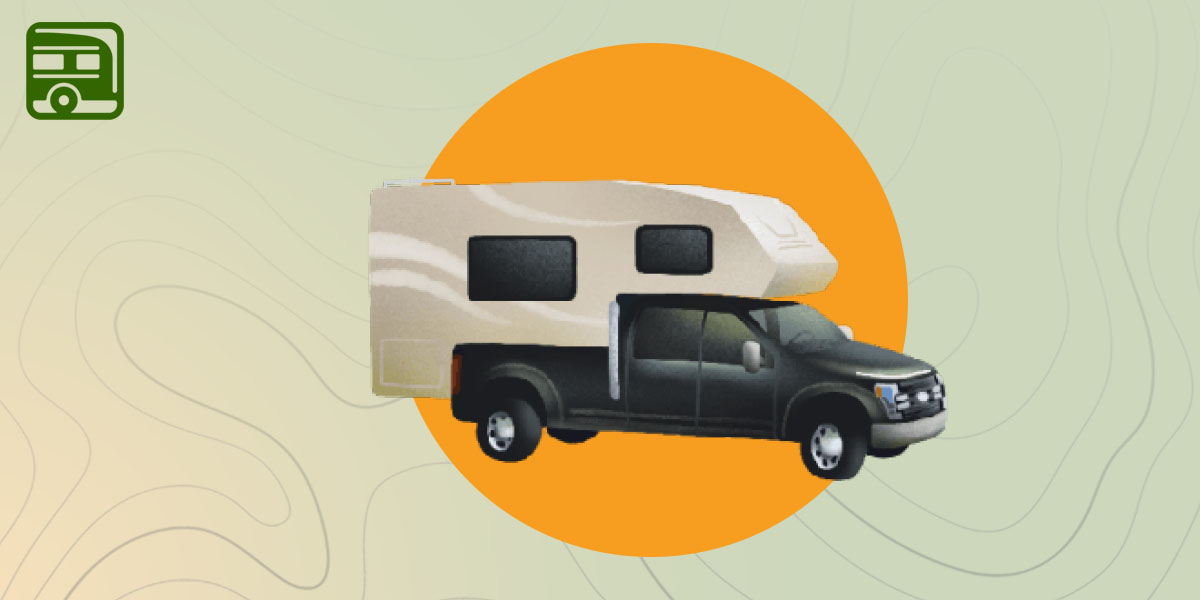There’s something primal about showing nature it’s not the boss of you. And that’s taken to an even higher (or lower) level when the temperature drops. Even so, hunting and gathering in winter months can be uniquely peaceful — and distinctly memorable. The crowds are elsewhere, huddling inside some warm brick-and-mortar interior. Some RVers even go further and snowbird down South. But communing with nature in winter, whether that’s hunting in the woods or parking it on the frozen ice of a lake in a fish house, is something else entirely. And if you’re going to do it, why not up the ante? Why not RV to the best winter hunting and ice fishing destinations in the land?
Whichever challenge you wish to take, this list delivers the best RV-friendly locations in the country for frosty foraging.
6 Winter Hunting and Ice Fishing Spots
1. Devils Lake, North Dakota – The Ice Fishing Mecca
Dubbed the “Perch Capital of the World,” Devils Lake is a bucket-list spot for ice anglers. Calling it the ice fishing Mecca is almost an understatement. It’s one of the most popular ice fishing destinations, attracting over 15,000 chilly visitors annually. This sprawling body of water provides ample opportunities to reel in jumbo perch, walleye, and northern pike. RVers will find several nearby campgrounds that cater to winter warriors, like Woodland Resort, which offers heated fish-cleaning stations and on-site guides.
But for the ultimate ice fishing experience, consider renting a special RV called an “fish house.” (Also, often called an “ice house.”) Simply put, it’s an RV with a hole in the floor, giving you all the benefits of shelter, including internet and TV. Needless to say, it provides a unique way to brave the elements without actually braving all the elements.
2. Eastern Montana – Big Game Hunting Paradise
Montana’s rugged eastern plains are a dream destination for hunters pursuing mule deer, elk, and pronghorn. While many folks associate big game hunting with fall, the late-season hunts in December and January offer a unique challenge and stunning snowy landscapes.
RVers should look into campgrounds near the Custer National Forest or BLM land, where boondocking is often allowed. Use caution when navigating snow-covered dirt roads. A set of chains for your tires is a must. Many seasoned road warriors also recommend carrying a shovel and traction boards to handle unexpected snowdrifts.
3. Green River, Wyoming – Ice Fishing and Hunting Combo
For those who want a bit of both worlds, Green River is a hidden gem. Flaming Gorge Reservoir, just south of town, is one of the most famous ice fishing destinations — especially for kokanee salmon and trophy-sized lake trout. The surrounding areas offer late-season hunts for mule deer and elk.
RVers can set up base camp at one of the nearby RV parks, like Buckboard Marina, which stays open year-round, and then double down on your winter adventure. There isn’t a name yet for this snowy version of the California Double (Note to Mark: link to the RV Trder article would be cool if live), but there should be. We suggest calling it “hitting a Double Frosty”. Instagram is going to love you for it!
4. Northern Michigan – Ice Fishing Haven
Michigan’s Upper Peninsula and northern Lower Peninsula are a paradise for ice anglers. Lakes like Houghton, Higgins, and Burt freeze over each winter, providing excellent fishing for walleye, perch, and bluegill. The U.P., in particular, offers a laid-back, snow-covered charm that’s hard to beat.
Many RVers head to state parks like Wilderness State Park, which offers electric hookups for winter campers. Don’t forget your RV’s snowbrush and an insulated water hose to keep your setup running smoothly during those chilly nights.
5. South Texas – Winter Hunting Escape
If subzero temperatures aren’t your style, South Texas offers mild winter weather and world-class hunting opportunities. White-tailed deer, feral hogs, and exotic game are abundant on ranches throughout the region. Plus, there’s no need to worry about frozen pipes or icy roads down here.
Head to areas like the Hill Country or the Brush Country near Laredo. Many RV-friendly ranches, such as the Chaparral Wildlife Management Area, provide dedicated RV spots. Bonus: South Texas is a hotspot for snowbirds, so you’ll be in good company with fellow RV travelers.
6. Frank Church River of No Return Wilderness, Idaho – The Ultimate Hunting Experience
Spanning 2.3 million acres, the Frank Church River of No Return Wilderness is one of the largest contiguous wilderness areas in the United States. For hunters and anglers, it’s a rugged paradise. Winter visitors can pursue elk and mountain lion, or try their hand at steelhead fishing in the Salmon River. The area’s remoteness guarantees a pristine and undisturbed experience, but it also means planning is key.
RVers typically set up camp in nearby towns like Salmon or Challis, where you can find RV parks with winter amenities. But for the ultimate hunting experience, connect with a local outfitter. These guides make a living giving outdoorsmen the ultimate guided experience, providing expertise, supplies, and tips on landing the big score. They’ll also deliver you by horseback into the deep reaches of the untamed landscape. Just be prepared for snowy conditions, and bring your sense of adventure—this is winter recreation at its most raw and rewarding. And there’s absolutely nothing like it.
Tips for RVing at Winter Hunting and Ice Fishing Destinations
Prep Your Rig
Winter RVing requires some extra work to stay cozy. Here are some essentials:
- RV Skirting: Reduces heat loss and protects plumbing from freezing.
- Portable Heaters: Add supplemental heat inside your rig.
- Heated Water Hose: Prevents freezing, which can be catastrophic.
- Insulate Windows and Doors: Use foam boards or reflective insulation to keep cold drafts at bay.
- Check Your Batteries: Cold weather can drain RV batteries quickly, so consider a solar panel setup or an additional generator.
- Stock Up on Propane: Heating your RV will consume more propane than you might expect. A good rule of thumb is to plan for 1.5 gallons per day.
Plan Your Route and Stay Safe
- Always check the weather and road conditions before heading out. Mountain passes can become snow-covered quickly.
- Invest in a good set of tire chains and keep them accessible.
- Carry a fully stocked emergency kit with items like blankets, a first-aid kit, flashlights, and a portable jump starter.
Respect Local Regulations
Both hunting and ice fishing come with their own sets of rules and regulations, which can vary by state and season. Make sure to:
- Obtain necessary licenses and permits.
- Familiarize yourself with bag limits, seasons, and any special restrictions.
- Practice ethical hunting and fishing to preserve these incredible experiences for future generations.
Make Memories That Last a Lifetime
Whether you’re using winter RVing to thumb your nose in Mother Nature’s face, or just looking to keep that sense of adventure kindled on the off-season, it offers a unique blend of solitude, adventure, and connection with nature. Whether you’re sitting in a heated ice house waiting for the next big bite, or hiking through snowy backcountry in pursuit of big game, your memories will stay with you long after the snow melts.
So pack up your rig, prep it for the cold, and hit the road. From the icy plains of North Dakota to the sunny stretches of South Texas, there’s a winter destination calling your name. Adventure is out there — go harvest it!
